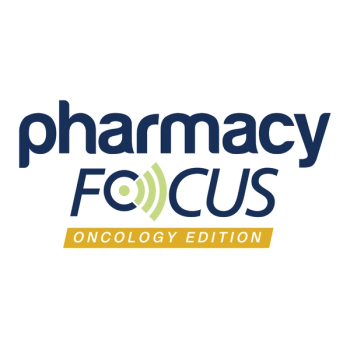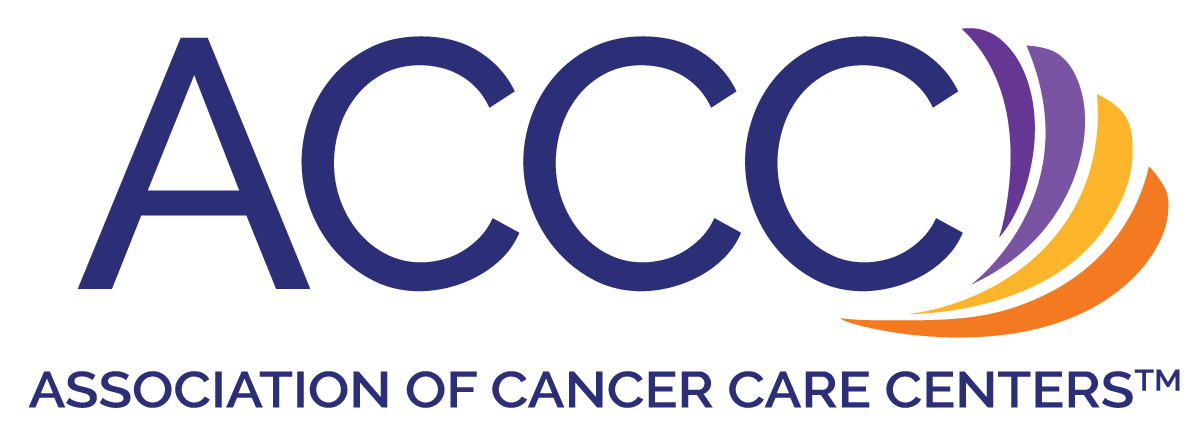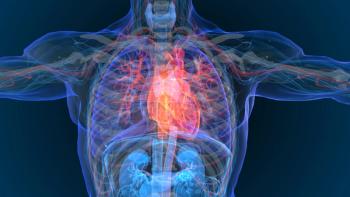
HER2 and HER3 in NSCLC: The Latest ADC Data and NCCN Guideline Updates

Corrine Stahura, PharmD, and Sophia Gilardone, PharmD, BCOP, discuss recent clinical trial data and evolving guideline recommendations for HER2- and HER3-directed antibody-drug conjugates (ADCs) in non–small cell lung cancer (NSCLC), highlighting differences in efficacy, safety, and patient selection criteria.
As antibody-drug conjugates (ADCs) gain momentum in the treatment landscape of non-small cell lung cancer (NSCLC), a growing body of evidence is reshaping how HER2- and HER3-targeted therapies are used in clinical practice. In an interview with Pharmacy Times®, Penn Medicine oncology clinical pharmacists Corrine Stahura, PharmD; and Sophia Gilardone, PharmD, BCOP, discuss key findings from pivotal trials, including DESTINY-Lung01, DESTINY-Lung02, and HERTHENA-Lung01, and explore how these data are influencing current National Comprehensive Cancer Network (NCCN) guideline recommendations. They offer insight into differences in efficacy and safety between trastuzumab deruxtecan (T-DXd; Enhertu; Daiichi Sankyo and AstraZeneca) and trastuzumab emtansine (T-DM1; Kadcyla; Genentech), the role of HER2 mutation vs HER2 overexpression in guiding ADC use, and the emerging relevance of HER3-directed therapies for patients with EGFR-mutated NSCLC.
Pharmacy Times: Can you summarize the most recent clinical trial data that inform the use of HER2 or HER3-directed ADCs in NSCLC?
Sophia Gilardone, PharmD, BCOP: I'm going to start by talking about the DESTINY-Lung trials. The 2 main ones I want to focus on are DESTINY-Lung01 and DESTINY-Lung02. DESTINY-Lung01 was a phase 2, open-label, single-arm trial that enrolled patients with HER2 mutations. There was also a cohort within this trial that included patients with HER2 IHC 3+ overexpression, which I’ll discuss shortly. In the trial, T-DXd was administered at 6.4 mg/kg IV every 3 weeks. The objective response rate [ORR] assessed by independent central review was 55%, with a median progression-free survival [PFS] of 8.2 months. Median overall survival (OS) was just under 18 months. Importantly, interstitial lung disease [ILD] occurred in 26% of patients, with 2% experiencing fatal ILD—something we've discussed in more detail earlier.
Corrine Stahura, PharmD; and Sophia Gilardone, PharmD, BCOP, discuss recent clinical trial data and evolving guideline recommendations for HER2- and HER3-directed antibody-drug conjugates in non–small cell lung cancer, highlighting differences in efficacy, safety, and patient selection criteria.
DESTINY-Lung02 was also conducted in a similar patient population but evaluated 2 doses of T-DXd: 5.4 mg/kg and 6.4 mg/kg, again administered every 3 weeks. This was a randomized study. The ORR at the 5.4-mg/kg dose was 49%, compared to 56% at the 6.4-mg/kg dose. Median PFS was 9.9 months at the lower dose and 8.3 months at the higher dose—very close to what we saw in DESTINY-Lung01. Most notably, ILD incidence dropped to 11.9% in the lower dose group, with no fatal ILD cases, compared with 2% fatal ILD at the higher dose. This supports the 5.4-mg/kg dose as preferable, maintaining efficacy with a better safety profile.
The HER2 IHC overexpression cohort in DESTINY-Lung01 included 49 patients with either IHC 3+ or IHC 2+ expression. The ORR in this group was around 25%, with a disease control rate of 70%. Median PFS was just over 5 months, and median OS was 11.3 months. ILD occurred in 19% of patients, with about 4% experiencing grade 3 or higher ILD, and fatal ILD was around 2%. While response rates were lower compared with the HER2-mutant population, HER2 IHC 3+ overexpression still showed clinically meaningful benefit, leading to approval for T-DXd in this subset. However, there are limited data for IHC 2+ expression.
Next, I’ll discuss patritumab deruxtecan, evaluated in the HERTHENA-Lung01 trial—a global, multicenter phase 2 study of over 200 patients with advanced EGFR-mutated NSCLC who had progressed on EGFR TKIs and platinum-based chemotherapy. The ORR was around 30%, and the CNS ORR was about 33%. Median PFS was 5.5 months, and median OS was 11.9 months. In terms of safety, 65% of patients experienced grade 3 or higher treatment-related adverse events, with thrombocytopenia, neutropenia, and anemia being most common, alongside fatigue and some lab abnormalities. About 7% of patients discontinued therapy due to adverse effects. ILD was observed in 5% of patients. This suggests patritumab deruxtecan may be a promising option for patients who have limited remaining therapies after targeted and chemotherapy regimens.
Pharmacy Times: How have response rates and progression-free survival outcomes evolved with newer ADCs in HER2- and HER3-expressing NSCLC subtypes?
Corrine Stahura, PharmD: T-DM1 was first approved for metastatic breast cancer in 2013 based on the EMILIA study, while T-DXd was first approved in 2020 based on DESTINY-Breast01. However, these agents have not been directly compared in lung cancer. While T-DM1 is listed in the NCCN guidelines for NSCLC, it is not FDA-approved for this indication. Separate trials have assessed PFS for both agents individually. In DESTINY-Lung01, T-DXd showed a median PFS of 8.2 months. For T-DM1 in HER2-positive NSCLC, median PFS was only 2.6 months. While both are included in guidelines, T-DXd is the preferred regimen, and these data demonstrate that newer ADCs offer improved efficacy in this setting.
Sophia already reviewed HERTHENA-Lung01, where patritumab deruxtecan demonstrated a PFS of 5.5 months—somewhere between what we saw with T-DM1 and T-DXd. Importantly, its indication is different; it's approved for advanced EGFR-mutated NSCLC rather than HER2-positive disease.
Pharmacy Times: What are the current NCCN or American Society of Clinical Oncology guideline recommendations for the use of HER2- and HER3-targeting ADCs in NSCLC? Have there been any recent changes?
Gilardone: In the NCCN guidelines, both T-DXd and T-DM1 are recommended as subsequent therapy for ERBB2 [HER2] mutation–positive NSCLC. Additionally, for HER2 IHC 3+ overexpression, T-DXd is also included. The most recent updates include a recommendation to test specifically for HER2 IHC status in addition to ERBB2 mutations. They now define what constitutes HER2 IHC 3+ expression. Another addition to the guidelines is zenocutuzumab, a HER2/HER3 bispecific antibody used for NRG1 fusions. Though it’s not an ADC, this reflects the expanding role of HER2-targeted agents in NSCLC.
Pharmacy Times: How does HER2 mutation status impact eligibility or response to ADC therapy in NSCLC compared to HER2 overexpression or amplification?
Stahura: The type of HER2 status definitely impacts ADC eligibility. Patients with HER2 mutations may receive either T-DXd or T-DM1. T-DXd is approved for both HER2-mutant and HER2 IHC 3+ NSCLC. However, T-DM1 is not approved for HER2 IHC-positive disease, making those patients ineligible for that therapy. It's also worth noting that HER2-mutant patients do not respond well to immune checkpoint inhibitors (ICIs) alone in the first-line setting. Therefore, it is important that these patients receive combination therapy with chemotherapy and ICIs in the frontline setting.
Pharmacy Times: Given the emerging data on HER3 as a therapeutic target in NSCLC, what is the clinical relevance of HER3 expression testing, and how might it influence treatment decisions?
Gilardone: HER3 testing is not currently standard. HER3 overexpression occurs in about 80% of NSCLC tumors and is even more common in those with EGFR mutations. HER3 can also function as a resistance mechanism to EGFR TKIs. In the HERTHENA-Lung01 trial, HER3 expression was assessed retrospectively but was not required for enrollment. Although evaluating HER3 could inform future treatment strategies, it is not currently a requirement for drug eligibility. As with HER2, we’ll likely continue learning more about how HER3 expression may impact treatment response over time.
Newsletter
Stay informed on drug updates, treatment guidelines, and pharmacy practice trends—subscribe to Pharmacy Times for weekly clinical insights.




















































































































































































































